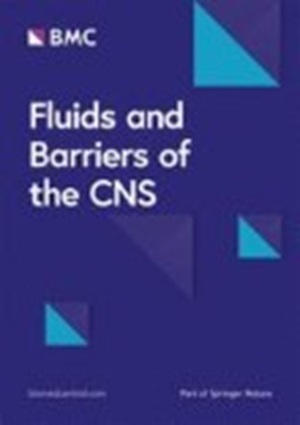关于 "第 4 层脑膜 SLYM 的结构特征 "的评论
IF 5.9
1区 医学
Q1 NEUROSCIENCES
引用次数: 0
摘要
几个世纪以来,脑膜一直被描述为三层膜:内层蝶鞍膜、中层蛛网膜和外层硬脑膜。因此,2023 年初,《科学》杂志发表了一篇关于位于椎孔和蛛网膜之间、以前从未被认识到的第四层脑膜的报道,引起了轰动。这层新膜被认为具有多种特征:以转录因子 Prox1 为标志的单细胞层对低分子量物质形成屏障,并将蛛网膜下腔(SAS)分隔成两个充满液体的区域,而不是之前描述的一个区域。这些特征还被认为有利于单向脑脊液运输。这些说法立即受到一些研究人员的质疑,认为是对作者自己数据的误读。批评者认为:(i) 作者声称的第 4 层脑膜并非作为一个独立的结构存在,而是蛛网膜的一部分;(ii) "外 SAS "隔室很可能是实验过程中人为制造的硬膜下空间;(iii) 第 4 层膜屏障特性与蛛网膜屏障相混淆。随后在 2023 年底发表的论文确实表明,Prox1 + 细胞嵌入蛛网膜内,紧靠蛛网膜屏障细胞内部,并通过粘连接头和间隙连接牢固地附着在蛛网膜屏障细胞上。在本刊发表的后续研究中,《科学》论文的主要作者谢尔德-莫尔高德(Kjeld Møllgård)和迈肯-内德加德(Maiken Nedergaard)报告了他们的其他观察结果,他们声称这些观察结果支持第4脑膜的存在,并支持将SAS分成两个非交流空间。他们对原论文稍作修改,即第 4 层脑膜在大脑腹侧的观察结果比在背侧的观察结果要好,而在背侧的观察结果则没有原报告的那么好。作者还声称经典文献支持第四脑膜的存在。在此,我们概述了对新数据和解释的多方面担忧,并反驳了之前文献中存在第四脑膜的说法。本文章由计算机程序翻译,如有差异,请以英文原文为准。
Commentary on “Structural characterization of SLYM – a 4th meningeal membrane”
For centuries, the meninges have been described as three membranes: the inner pia, middle arachnoid and outer dura. It was therefore sensational when in early 2023 Science magazine published a report of a previously unrecognized — 4th — meningeal membrane located between the pia and arachnoid. Multiple features were claimed for this new membrane: a single cell layer marked by the transcription factor Prox1 that formed a barrier to low molecular weight substances and separated the subarachnoid space (SAS) into two fluid-filled compartments, not one as previously described. These features were further claimed to facilitate unidirectional glymphatic cerebrospinal fluid transport. These claims were immediately questioned by several researchers as misinterpretations of the authors’ own data. The critics argued that (i) the 4th meningeal membrane as claimed did not exist as a separate structure but was part of the arachnoid, (ii) the “outer SAS” compartment was likely an artifactual subdural space created by the experimental procedures, and (iii) the 4th membrane barrier property was confused with the arachnoid barrier. Subsequent publications in late 2023 indeed showed that Prox1 + cells are embedded within the arachnoid and located immediately inside of and firmly attached to the arachnoid barrier cells by adherens junctions and gap junctions. In a follow-up study, published in this journal, the lead authors of the Science paper Kjeld Møllgård and Maiken Nedergaard reported additional observations they claim support the existence of a 4th meningeal membrane and the compartmentalization of the SAS into two non-communicating spaces. Their minor modification to the original paper was the 4th meningeal membrane was better observable at the ventral side of the brain than at the dorsal side where it was originally reported. The authors also claimed support for the existence of a 4th meningeal membrane in classical literature. Here, we outline multiple concerns over the new data and interpretation and argue against the claim there is prior support in the literature for a 4th meningeal membrane.
求助全文
通过发布文献求助,成功后即可免费获取论文全文。
去求助
来源期刊

Fluids and Barriers of the CNS
Neuroscience-Developmental Neuroscience
CiteScore
10.70
自引率
8.20%
发文量
94
审稿时长
14 weeks
期刊介绍:
"Fluids and Barriers of the CNS" is a scholarly open access journal that specializes in the intricate world of the central nervous system's fluids and barriers, which are pivotal for the health and well-being of the human body. This journal is a peer-reviewed platform that welcomes research manuscripts exploring the full spectrum of CNS fluids and barriers, with a particular focus on their roles in both health and disease.
At the heart of this journal's interest is the cerebrospinal fluid (CSF), a vital fluid that circulates within the brain and spinal cord, playing a multifaceted role in the normal functioning of the brain and in various neurological conditions. The journal delves into the composition, circulation, and absorption of CSF, as well as its relationship with the parenchymal interstitial fluid and the neurovascular unit at the blood-brain barrier (BBB).
 求助内容:
求助内容: 应助结果提醒方式:
应助结果提醒方式:


